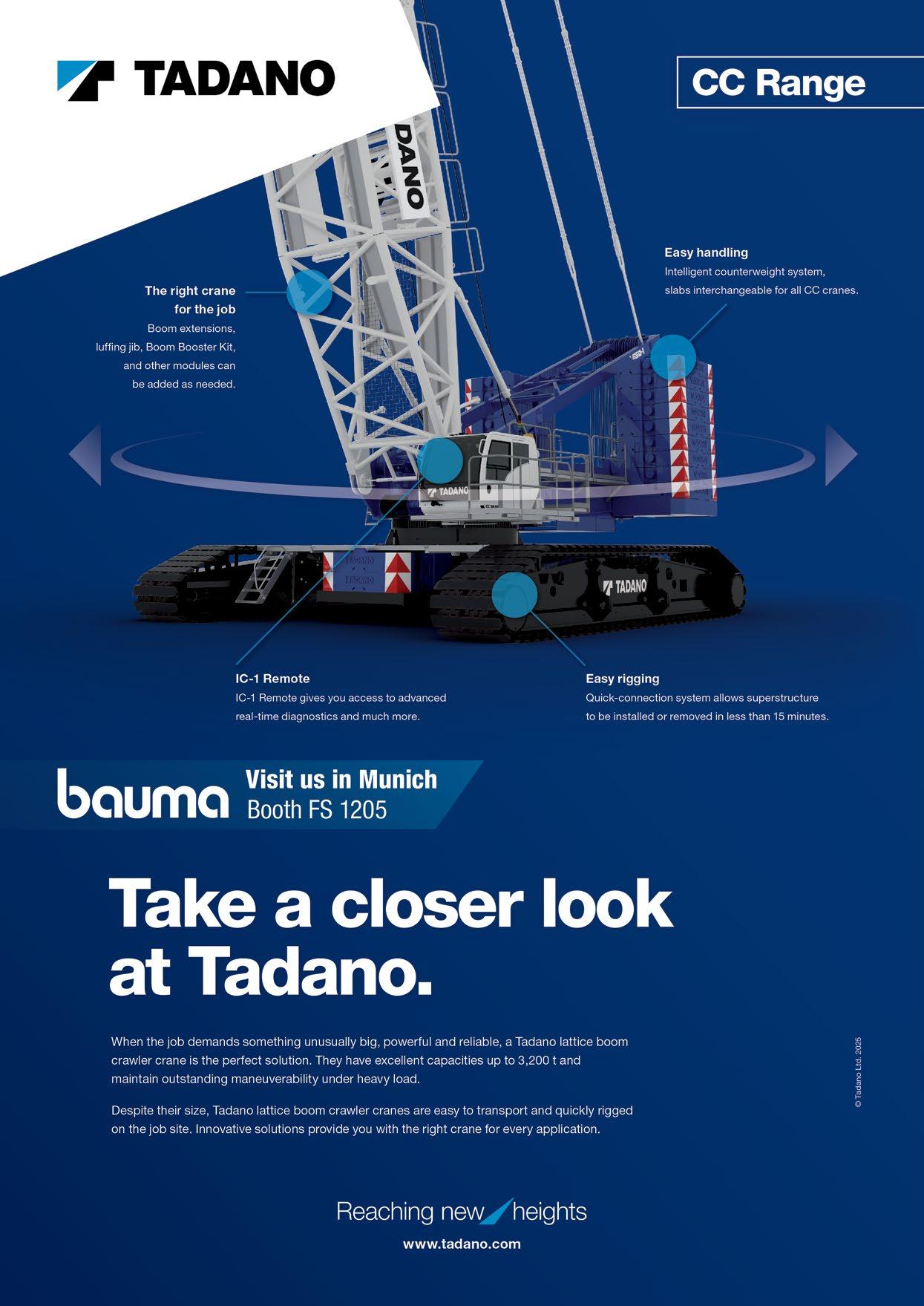
3 minute read
First electric offshore gas platform load-out
First electric offshore gas platform load-out
The N05-A platform is the first offshore gas platform in the Dutch North Sea to be fully electrified, using an electric transformer powered entirely from the nearby 113MW Riffgat offshore wind farm, reducing carbon emissions by more than 85 percent. When fully operational the unmanned platform will also emit less noise and light pollution as well as minimising transport movements during operations.
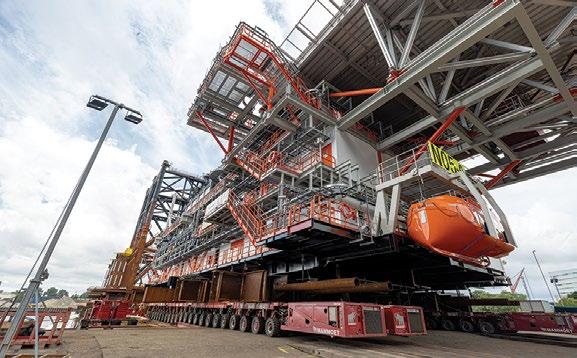
The platform is part of the GEMS (Gateway to the Ems) project which began around six years ago, tasked with the development of gas fields including N05-A in the waters on the border of the Netherlands and Germany.
Mammoet was approached by HSM Offshore to load out two components - the 3,050 tonne N05-A topside and 3,150 tonne jacket - onto a barge at HSM’s quayside fabrication facility in Schiedam, Rotterdam. The offshore shipping and installation were managed by One-Dyas, the owner of the platform.
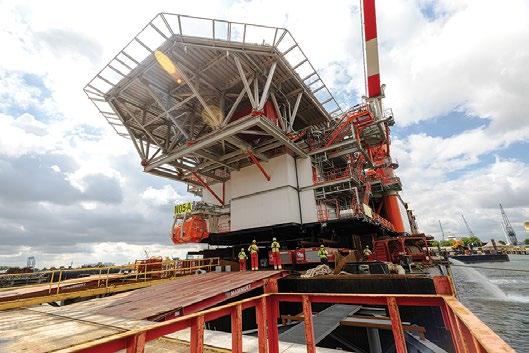
Assembly and Weighing
Mammoet’s engineering solution allowed the jacket to be assembled more efficiently, close to its installation location and critically reduced the lead time for construction. The jacket was fabricated and assembled in two parts, so the first phase involved bringing them together. The top section of the jacket was raised using two sheerleg cranes, creating the space underneath for the bottom section to be driven under so that the two parts could be joined.
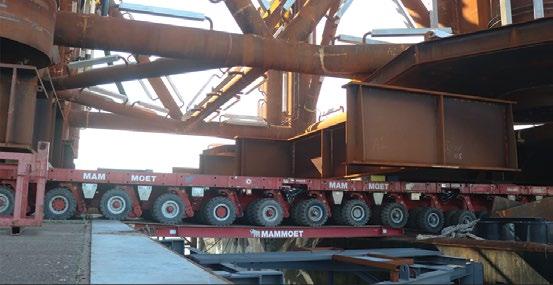
Self-Propelled Modular Transporters (SPMTs) were positioned beneath the fully assembled structure so that it could be moved to quayside, where a Liebherr pedestal crane was installed using an All Terrain crane.
The team then used sixteen, 300 tonne load cells on the SPMT to confirm the final weights of each of the two structures along with their centre of gravity. The actual weights were very close to the original predictions.
Shipping Schedule
One of the biggest challenges of the project was the load-out phase. Normally for loadouts of this type, a barge would receive either a topside or a jacket - not both together. However, for this project both structures needed to be loaded out onto the same vessel to shorten the overall schedule.
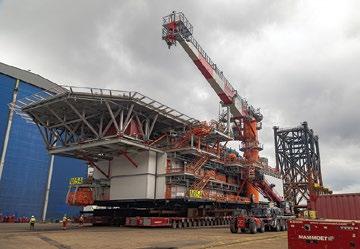
Due to the overall weight the barge had to be ballasted to keep it level with the quay as theloads were driven aboard. This involved pumping water out of one side of the barge and pumping water into the other side. This was achieved using 20 ballast pumps which when running at the same time can pump 20 million litres of water an hour.
“The mooring was quite critical,” said project manager Sven Segeren. “Normally, we would use a configuration of winches to moor and stabilise the vessel, but that wasn’t possible because of the force of the considerable loads. The loads on the winches were too high and the bollards not strong enough, so a small spud leg barge was used to secure the vessel and keep it in position prior to, during and after load-out.”
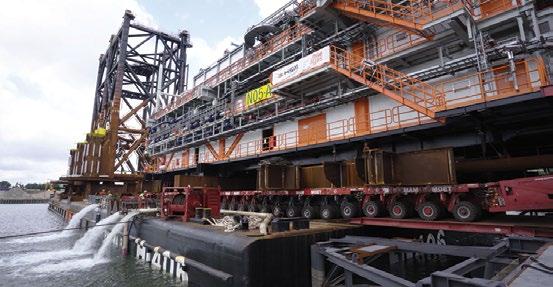
It took five days to prepare the main barge, while the load-out operation of the jacket foundation and topside was completed in just two days.
